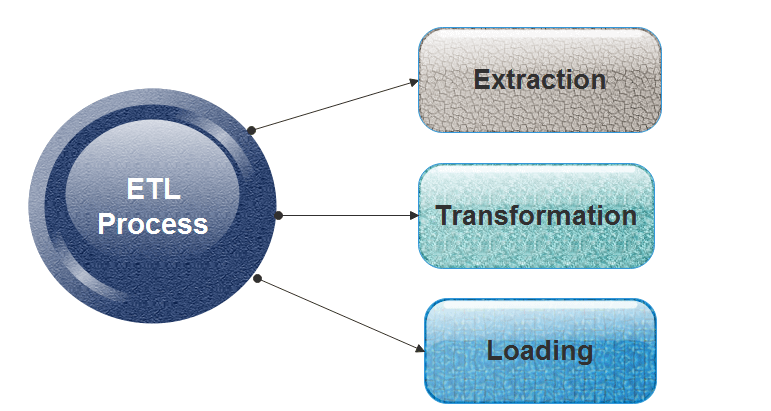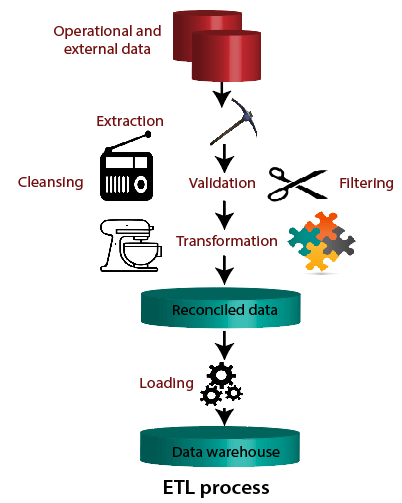ETL (Extract, Transform, and Load) ProcessWhat is ETL?The mechanism of extracting information from source systems and bringing it into the data warehouse is commonly called ETL, which stands for Extraction, Transformation and Loading. The ETL process requires active inputs from various stakeholders, including developers, analysts, testers, top executives and is technically challenging. To maintain its value as a tool for decision-makers, Data warehouse technique needs to change with business changes. ETL is a recurring method (daily, weekly, monthly) of a Data warehouse system and needs to be agile, automated, and well documented. 
How ETL Works?ETL consists of three separate phases: 
Extraction
CleansingThe cleansing stage is crucial in a data warehouse technique because it is supposed to improve data quality. The primary data cleansing features found in ETL tools are rectification and homogenization. They use specific dictionaries to rectify typing mistakes and to recognize synonyms, as well as rule-based cleansing to enforce domain-specific rules and defines appropriate associations between values. The following examples show the essential of data cleaning: If an enterprise wishes to contact its users or its suppliers, a complete, accurate and up-to-date list of contact addresses, email addresses and telephone numbers must be available. If a client or supplier calls, the staff responding should be quickly able to find the person in the enterprise database, but this need that the caller's name or his/her company name is listed in the database. If a user appears in the databases with two or more slightly different names or different account numbers, it becomes difficult to update the customer's information. TransformationTransformation is the core of the reconciliation phase. It converts records from its operational source format into a particular data warehouse format. If we implement a three-layer architecture, this phase outputs our reconciled data layer. The following points must be rectified in this phase:
Following are the main transformation processes aimed at populating the reconciled data layer:
Cleansing and Transformation processes are often closely linked in ETL tools. 
LoadingThe Load is the process of writing the data into the target database. During the load step, it is necessary to ensure that the load is performed correctly and with as little resources as possible. Loading can be carried in two ways:
Selecting an ETL ToolSelection of an appropriate ETL Tools is an important decision that has to be made in choosing the importance of an ODS or data warehousing application. The ETL tools are required to provide coordinated access to multiple data sources so that relevant data may be extracted from them. An ETL tool would generally contains tools for data cleansing, re-organization, transformations, aggregation, calculation and automatic loading of information into the object database. An ETL tool should provide a simple user interface that allows data cleansing and data transformation rules to be specified using a point-and-click approach. When all mappings and transformations have been defined, the ETL tool should automatically generate the data extract/transformation/load programs, which typically run in batch mode.
Next TopicDifference between ETL and ELT
|
 For Videos Join Our Youtube Channel: Join Now
For Videos Join Our Youtube Channel: Join Now
Feedback
- Send your Feedback to [email protected]
Help Others, Please Share










